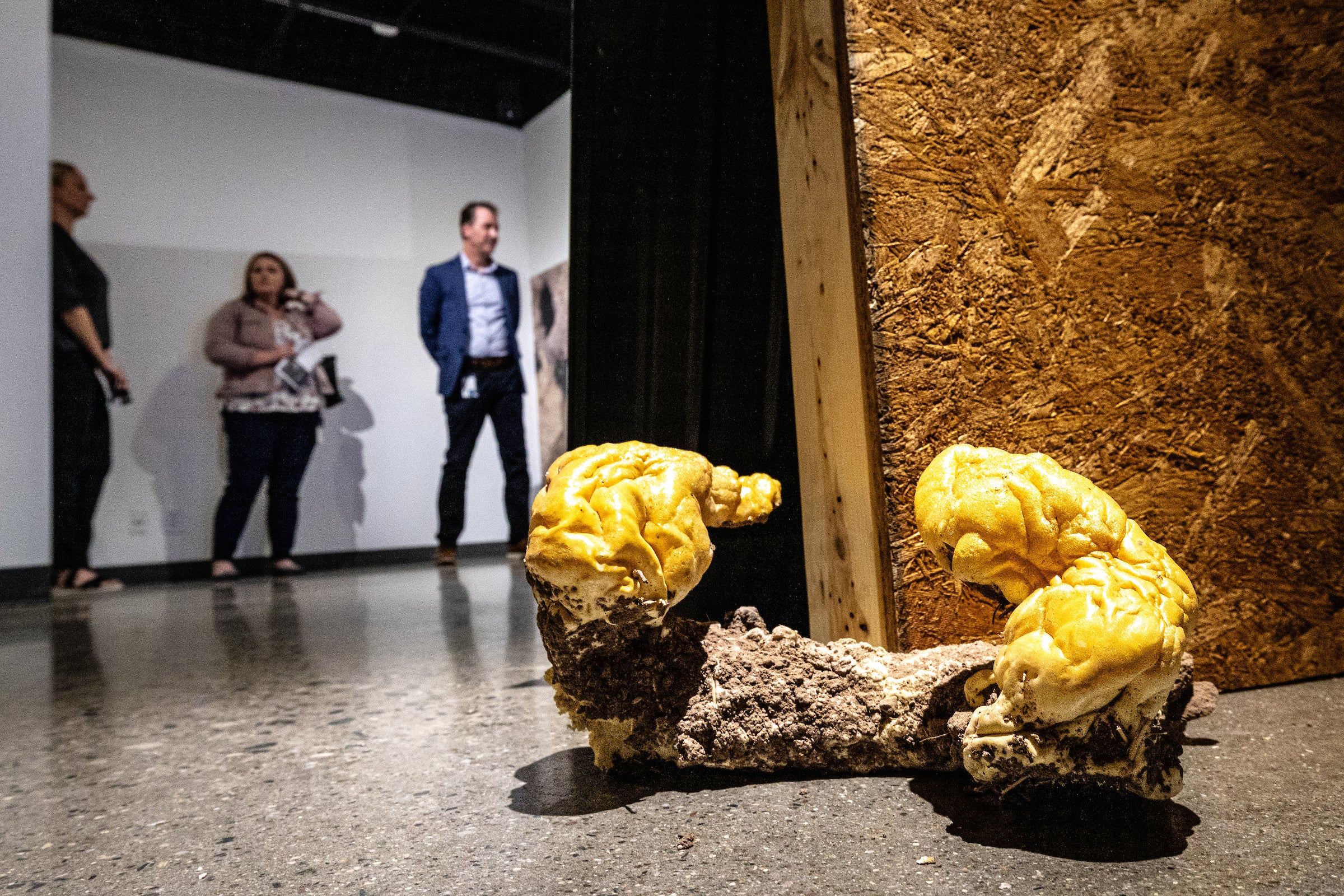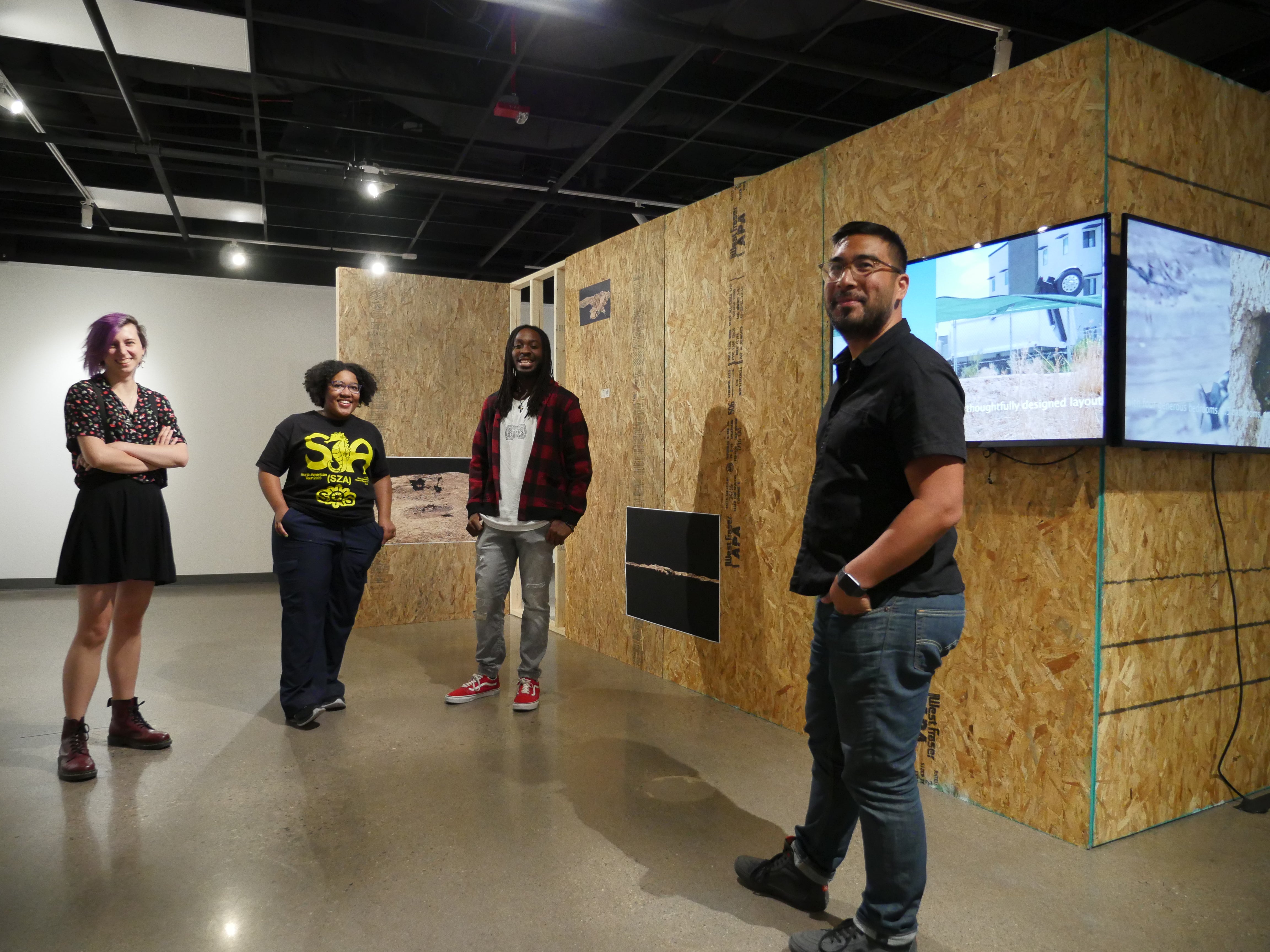Burrows and buildings are the subjects of a new art exhibition that opened Wednesday at ArtSpace West, a gallery located on Arizona State University’s West campus.
“Uninvited Guests” explores the impact of urban expansion on the fragile habitats in the desert. The idea came about from artist alejandro acierto watching the humble habitats of burrowing owls, prairie dogs, mice and more be replaced by half-a-million-dollar homes.
“The installation responds to the issue of what gets displaced by urban development in the West Valley,” said aciertoalejandro acierto uses lower case styling for his name. , an assistant professor in ASU’s School of Humanities, Arts and Cultural Studies.
The work for the exhibit was produced off Van Buren Street in Avondale, near a new home development and next to adjacent, city-owned farmland that may be slated for more development.
“I live here in the desert, in the midst of a water crisis and rapid development,” explained acierto, who teaches interdisciplinary arts and performance at ASU. “I feel responsible for understanding the new social dynamics that come out of developments — particularly luxury homes.”
Foam sealant, organic matter and compacted dirt from a rodent's burrow was used to create "Once Occupied Burrow fragment 2," part of alejandro t. acierto's "Uninvited Guests" exhibition, on display at ArtSpace West. Photo by Charlie Leight/ASU News
There are 15 pieces in the show, including videos, lens-based printed photography, digital artifacts, fragments of animal burrows and more. The art is installed on and around randomly constructed wood strand boards. “Uninvited Guests” is on view through Oct. 28.
The exhibit inspires dialogue around choices: material values versus the value of nature in its untouched form; the material gain of development weighed against the risk of ruining what was once rural. The installation invites ideas about alternative methods of building that care for the needs of life before expansion.
Lilith Tuck says the installation juxtaposes structure that already exists in nature against the structure being imposed upon it.
“Empty burrows once filled with life are being pushed aside by half-a-million-dollar homes that no one can afford,” said Tuck, a second-year student who is studying interdisciplinary arts and performance at ASU.
For Jeremiah Holland, a fourth-year student studying film and media at ASU, said the show provided many opportunities.
“I wanted the chance to get exposed to new artists,” said Holland, production assistant for the show. “Film is a collaborative effort and being exposed to other art forms and working on this show helps me learn how everything comes together. That is an experience I will one day use in my work.”
Artist alejandro acierto (far right) poses with ASU students (from left) Lilith Tuck, Brielle Lee and Jeremiah Holland at the opening reception for his exhibit “Uninvited Guests” on Oct. 4 at ArtSpace West, a gallery on ASU's West campus. Photo by Dolores Tropiano/ASU News
ArtSpace West is a small gallery that brings big ideas to ASU’s West campus. The gallery is open noon to 5 p.m. Mondays through Thursdays and holds multiple installations throughout the year. Next up: “Native Veterans Print,” an exhibition of prints by Native veterans in collaboration with the Heard Museum and Native Artists Resource Group. It runs Nov. 9–22.
“I am grateful that ASU West has a space like this,” said Brielle Lee, gallery director for ArtSpace West and a fourth-year student.
Lee, who is majoring in history and English, referenced ASU’s position as No. 1 in innovation and emphasized the importance of innovation in the arts as well STEM fields.
“The gallery provides a beautiful space to help artists get exposure,” said Lee, “and students get exposed to art — to learn and be inspired.”
Top photo: Interdisciplinary arts and performance faculty alejandro t. acierto’s interpretive "Notice of occupancy 2 (parcel 500-01-010B, 33.45538, -112.311127, Avondale, AZ) 2023," part of his "Uninvited Guests" exhibition is on display at ArtSpace West on ASU's West campus. His work juxtaposes existing structures of nature and the structures humans impose on it. The show will be open Mondays through Thursdays until Oct. 28. Photo by Charlie Leight/ASU News
More Environment and sustainability

'Earth Day Amplified' promotes power of collective action
Everybody loves the concept of sustainability. They want to do their part, and the chance to say they’ve contributed to the well-being our of planet.But what does that actually mean?Arizona State…

Rethinking Water West conference explores sustainable solutions
How do you secure a future with clean, affordable water for fast-growing populations in places that are contending with unending drought, rising heat and a lot of outdated water supply infrastructure…
Meet the young students who designed an ocean-cleaning robot
A classroom in the middle of the Sonoran Desert might be the last place you’d expect to find ocean research — but that’s exactly what’s happening at Harvest Preparatory Academy in Yuma, Arizona.…




